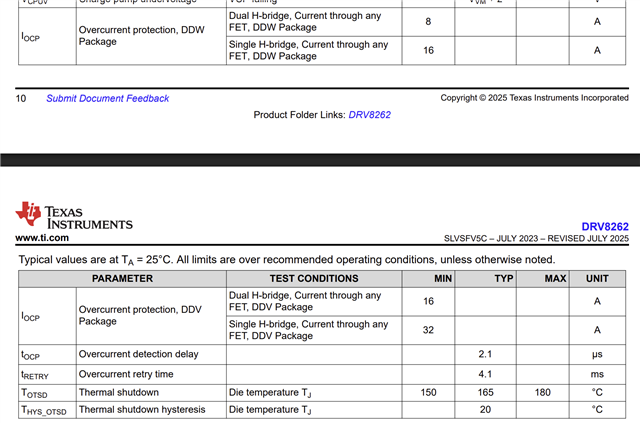Hello,
On my current design a choose a DRV8262DDW, it's a single H bridge. On datasheet, the internal current sense is connected together only for single H bride. in this case, the OCP is set for both NMOS (I suppose that, it's difficult to understand the behavior of internal mirror current)
I have a question about resistor calculation IPROPI. On my design a put a single resistor 3.3K to GND. In this case, I suppose that the OCP is set at 4.71A for OUT1 and OUT2. is it true or false ?
I would like set the OCP at 8A for OUT1 and OUT2, could you calculate the resistor ?
Thank for your help
Best regards









